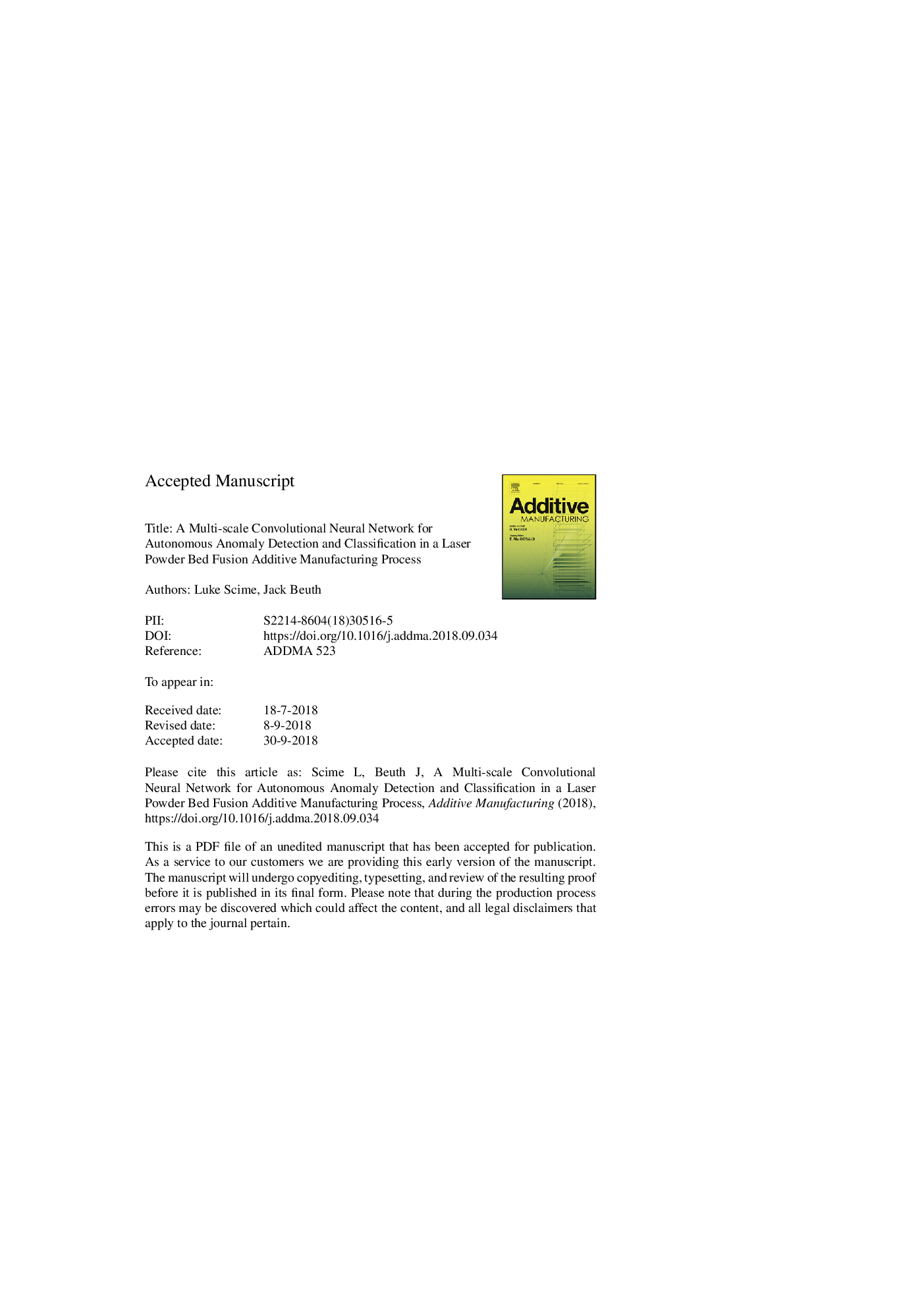| Article ID | Journal | Published Year | Pages | File Type |
|---|---|---|---|---|
| 11027753 | Additive Manufacturing | 2018 | 35 Pages |
Abstract
In-situ detection of processing defects is a critical challenge for Laser Powder Bed Fusion Additive Manufacturing. Many of these defects are related to interactions between the recoater blade, which spreads the powder, and the powder bed. This work leverages Deep Learning, specifically a Convolutional Neural Network (CNN), for autonomous detection and classification of many of these spreading anomalies. Importantly, the input layer of the CNN is modified to enable the algorithm to learn both the appearance of the powder bed anomalies as well as key contextual information at multiple size scales. These modifications to the CNN architecture are shown to improve the flexibility and overall classification accuracy of the algorithm while mitigating many human biases. A case study is used to demonstrate the utility of the presented methodology and the overall performance is shown to be superior to that of methodologies previously reported by the authors.
Related Topics
Physical Sciences and Engineering
Engineering
Industrial and Manufacturing Engineering
Authors
Luke Scime, Jack Beuth,
